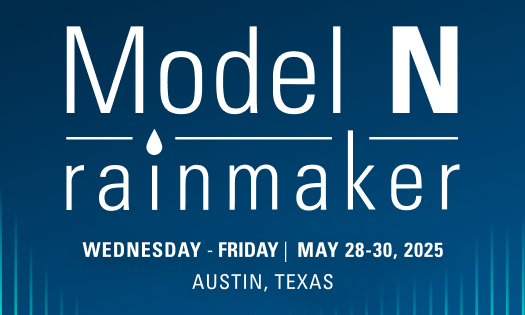The current economic uncertainty is driving more layoffs, reorganizations, and general belt-tightening, particularly in the technology sector. But businesses still seek to grow revenues. To do this, they are increasingly turning to channel partners to help them scale their operations and achieve greater market reach. The challenge then becomes, how do you effectively manage partner relationships with fewer resources? The answer: automation.
Rod Baptie is owner of Baptie & Co, a provider of best practice and how-to information for high-tech companies with a channels and their partners. He also runs the global Channel Focus Community, and in Q4 2023, he hosted a Channel Focus Conference and one of the sessions was on “Doing More with Less – Using Automation to Streamline Your Partner Program.” I had the opportunity to be one of the guests for this session.
How to engage partners: first, automate onboarding and communications
Managing partner relations is difficult and those from the audience had posed some of the many questions that typically come up: Are our partners registering deals? Are they claiming their incentives? Are they advancing toward the next tier to achieve deeper discounts?
It’s not unusual for manufacturers to have to look at 10 different systems to get these and other questions answered. And complexity is increasing because manufacturers are engaging with more and more types of partners in addition to conventional distributors: consulting partners, referral partners, traditional resellers, MSP, retailers…and the list goes on.
When it comes to partner automation, it is important to first focus on two basic areas: the onboarding process and communications.
When it comes to onboarding, you need to make it simple and easy. It’s a red flag to potential partners if the process is so difficult and cumbersome that they can’t even get started.
And automating communications is foundational for building relationships with partners. That means automating a full cadence of communications – not just sending an email welcoming them on board and leaving them on their own.
You want to be able to send messages like, “It’s day 10, have you done X, Y, and Z yet?” Or, “it’s been 30 days. Did you know if you do these three things, you can drive more exponential growth?” Or, “Don’t forget to attend this webinar to find out ways to accelerate sales.” There are so many kinds of communications that will engage your partners and inspire them to improve performance and growth, and make sure they – and you – are hitting revenue targets.
Anticipate what your partners want and need
One of the quickest wins that manufacturers can achieve with automation is to set up automatic workflows that answer questions before your partners are forced to ask them. Ask yourself: Do your partners fully understand the parameters of the program they’ve been enrolled in? Do they have to reach out to you for details or is the information they need already sitting in their email box or in their partner portal? How about their progress if they’ve signed up for a multi-tiered incentive rebate – can they check on that without approaching you or your team directly?
Pre-empting questions, and – especially – getting ahead of disputes before they occur is paramount. The ultimate goal: frictionless channel operations.
Getting everyone to work together seamlessly
According to the panel, one of the biggest challenges is that most manufacturers and prospective partners have existing legacy revenue management systems. Each party has its own way of doing things. So one way of making everything works together is to seek a third-party organization to do the automation and execution of everything from lead management, to lead routing, and other operations so that companies don’t have to duplicate efforts and then hook back into core systems.
This kind of arrangement leads to greater transparency, which is essential, because companies need to see if partners happen to be pursuing the same opportunity. The chance to do opportunity sharing and to work together on cross-sell or upsell deals can be very advantageous.
Eliminate “needless tasks” and ask “difficult” partners to vet new automation initiatives
Needless tasks are the actions partners have to take because they don’t know where to find a particular piece of information. It comes back to communication, he says. Anything manufacturers can do to avoid having to interact personally with partners while still giving the partner a rich and full experience is beneficial to the relationship. Having a portal is essential, of course, but is only useful if it’s full of content but not overwhelming. It should provide partners with the information they need in an efficient, clean, and focused way.
When asked whether a partner advisory board is a good idea, the answer was yes – with some reservations. Constant engagement with partners is generally time well spent, he said. Running new programs or initiations past them before launching can be very helpful. But the biggest mistake manufacturers make is only soliciting feedback from the “friendly” ones. He advises going to the most difficult partners first and ask them to critique what you’re planning, get them to kick the tires – and then take their feedback very seriously. You might hear things you don’t like, but if you pass that more difficult test, you’re more likely to have smooth sailing after that. He also warned about putting too much time and energy into these partner councils. Perhaps solicit their advice three or four times a year. Otherwise, they might not see it as providing them with a lot of value.
Get the most out of dashboards
You do have to balance automation with the human touch – that’s an important aspect of the partner relationship – but for partners to be able to execute tasks and access critical information in a matter of seconds, self-service dashboards are an imperative.
Take customer renewals. Partners don’t always keep good databases of records about their installed bases. Renewals are opportunities in their own right – and frequently the lifeblood of a lot of manufacturers – so being efficient in how you notify partners about renewals is very impotent. Your partners will be very grateful for this service.
For the most part partners look for some very specific dashboard features for them to be truly helpful. Quick visual representation of progress on certifications, and on achieving higher levels of the program, for example. Visual renderings of opportunity and revenue growth over time are needed, as well as the market development funds (MDF) or marketing or business development funds that are available to tap into.
The important point (again), is that you don’t want to force partners to search for the information they need. The dashboard should encapsulate all aspects of the business relationship, and how actual results are measuring up against targets. The ultimate goal, of course, is to provide the much-sought-after single pane of glass for everything your partners need to know.
Another, more recent, trend is that manufacturers are using their dashboards to help capture more mindshare. Your partners have relationships with many many vendors. So manufacturers are beginning to use dashboards like social media platforms by attempting to engage partners and entice them to spend more time with the brand. This means continually adding value to dashboards in the form of tips and best practices, identifying trends partners’ customers are likely to be most interested in, even pre-written blurbs to post on their websites or social media like Facebook and LinkedIn.
Speed is Currency
Partners today also have very high expectations of quality of service. Time is their most valuable resource. Are you able to respond to quote requests in a timely manner? Can your system take automated, layered complex pricing logic and immediately return a price on a request? Or do your partners have to wait for a response after your team has pulled data from three or four different systems, run it through an Excel macro, and get approval from the boss and the boss’s boss? Meanwhile, your competitor has already returned a price and signed a ship-and-debit contract with that partner.
How to engage versus enable partners
Happily, engaging and enabling partners is much easier to do today than five years ago because of all the tools and systems now available. In terms of partner engagement, you should launch your portal and established your partner programs – Because these can vary in number from 30 to 50 initiatives at any given time, you need to deploy automated tools to measure partner activity. Such tools can tell you which partners have logged on, and for how long. They can inform you what they’ve looked at. What content they’ve consumed. Also, are they actively engaged, or have they ignored your attempts to communicate with them. Perhaps they signed up but have done nothing. You need to stay on top of this, and automation can help.
Once partners are engaged, the question becomes, how do you enable them to actually sell? Are they transacting business through your deal registration program? Are they qualifying leads? Are they spending the MDF dollars you’re giving them? Claiming their rebates and moving up though the program tiers?
It’s in this enablement phase that automation processes and tools become super critical.
In summary: leverage automation to track your KPIs
In the end, automation is foundational for your ability to track whether your partner program is successful or not.
When building partner performance systems and dashboards, a key step is identifying the key performance indicators (KPIs) that are important to you. There are obvious ones, like revenue and compliance. But they can vary. If you’re trying to move your business to from direct sales to channel sales or bundling in cloud-based products, progress on converting customers or attracting new ones is a key KPI. Renewals are also important. Also, the rebate disbursements and ROI on MDF dollars.
And once you have your channel KPIs, make sure they align with your overall corporate goals. Automation is key to all of this, because it allows you to gather the data that drives those KPIs, and automate ways visually present them to individual partners, account managers – who can be responsible for multiple accounts – as well as C-suite executives.
The most critical role automation plays must be to find a way to consolidate all the data from all the various systems and then present the information in a visual way that is meaningful.
To learn more about how you can use automation to do more with less when managing your partner relations, watch the webinar “What Distributors Really Want from High Tech Manufacturers.”














